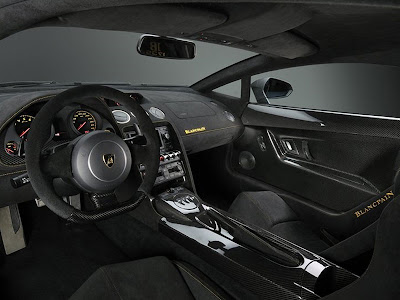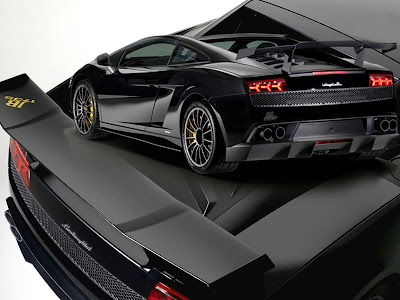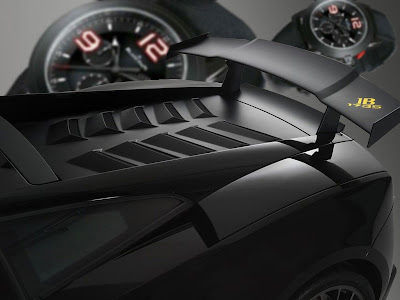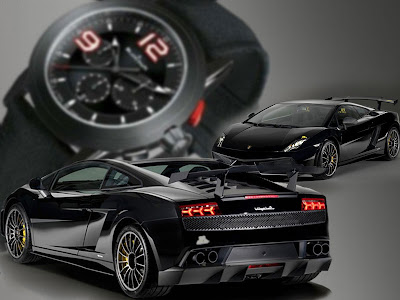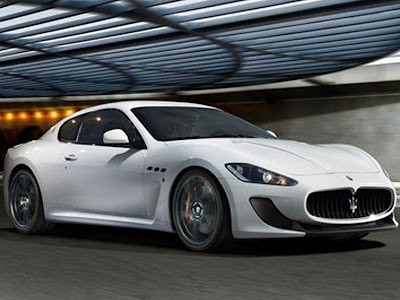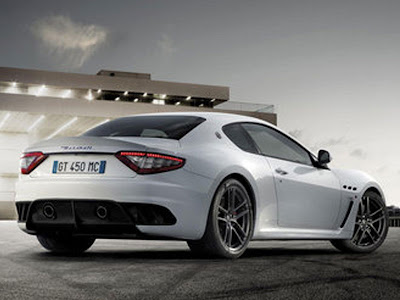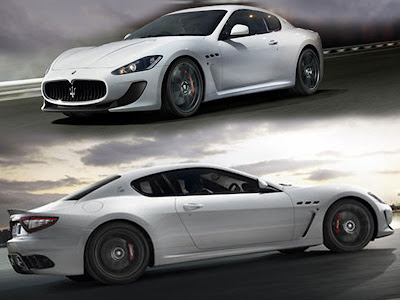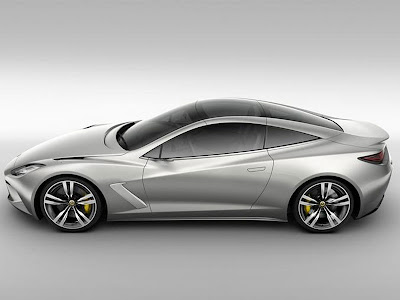
2011 Lamborghini Super Sport Cars

2012 Maserati Sport Cars

Peugeot Sport Cars Epine Concept

Lamborghini
To put it mildly, we like what we see. As could be seen in the series of teasers officially let loose by the boys from Lamborghini, every single bit of the car has been fashioned from carbon fiber. Suitable, then, that the car has been named after the sixth element of the periodic table – Sesto Elemento literally means sixth element in Italian. Even the tailpipes have been fashioned from a sort of composite called Pyrosic that is able to withstand extremely high temperatures.
Those high exhaust temperatures will be exhaled by a V10 engine that's putting out a stonkin' 570 horsepower. With just 2,200 pounds of weight to move, the run to 60 will take less than 2.5 seconds.

2010 Lotus Elite sports car


2010 Citroen Lacoste Concept

Hyundai Azera Limited
Hyundai's most recently refreshed product is the 2011 Azera. When the Azera first arrived on U.S. shores as a 2006 model, it came came close to nixing the "for a Hyundai" stigma with an impressive level of standard equipment and a lower price tag than its competition. But even with a strong value equation and plethora of amenities, that original Azera still wasn't as refined as the current crop of winners coming out of South Korea. Can the freshly redesigned 2011 Azera, with an improved powertrain and increased level of luxury equipment, truly succeed like its all-star siblings?
The Azera has received more than a mild refresh for 2011, with a pair of upgraded powertrains, new headlamps, taillamps, fog lights and a host of tweaks and tucks to the front and rear fascias. Our Midnight Blue Limited tester included the only available option, a $1,750 navigation system, nudging the Azera's MSRP to $32,620. That's still about $5,000 fewer greenbacks than a similarly equipped Toyota Avalon or Ford Taurus. A good deal? Perhaps, but competing in the full-size sedan segment means measuring up on more than just price.
When looking over the Azera from the outside, the large sedan's newest features shine brightest, and not just because we're talking head- and taillamps. The Azera's headlights are pretty special, with the LED-encrusted, Audi-like elements begging for attention. The taillamps are pretty snazzy as well, as Hyundai has gone a bit nuts with the light-emitting diodes. The chiseled front grill also impresses, borrowing its basic shape from the Genesis Sedan while going all-in with chrome in a decidedly American manner. We're also fans of the rich, sparkly Midnight Blue paint job, which gives the Azera a welcome touch of class.
While the Azera's updated exterior elements add a touch of freshness, there are still more than enough throwbacks to push it towards the back of the pack visually. Exhibit A: a tall and somewhat awkward greenhouse. Compared to the steeply-raked, coupe-like roofline of the Sonata, the Azera looks as if it were penned by a fan of Oldsmobiles from the 1990s, and it doesn't fare much better against sleek-looking competitors like the Nissan Maxima or Buick LaCrosse.
Park a new Sonata next to an Azera and even the optically challenged can see the larger Hyundai offers a far less compelling cabin while commanding a starting price that's several thousand dollars lower. On the high end of the company showroom is the Genesis Sedan – a fair comparison given our tester was within $1,000 of the starting price of Hyundai's Lexus-fighter. The base Genesis and uplevel Azera also share the same basic powertrain and both offer near identical levels of interior volume. The difference, besides the Genesis being driven by its rear wheels and the Azera its fronts, is that the Genesis comes packed to the sunroof with amenities and interior refinement, while the Azera struggles even against the not-long-for-this-world Buick Lucerne. For instance, the sat-nav on the Genesis – a massive, modern-looking system – dwarfs the Azera's seven-inch unit in both size and design.
When mated to its new, smooth-shifting six-speed automatic transmission, the revised Lambda 3.8-liter V6 proves is very competent and impressively smooth – easily the best attribute the Azera has to offer. And all that power doesn't kill you at the pump, as the EPA rates the 3.8-liter V6-powered Azera at 27 miles per gallon on the highway and 19 mpg around town. We managed to average just under 22 mpg, mostly because we were "fully experiencing" the 3.8-liter engine.
So we've established that the Azera shouldn't waste the application fee for any beauty contests, its interior could use some love and its powertrain is a strong suit. Is that enough to propel Hyundai's updated sedan past the "for a Hyundai" designation? In a word, no. Truth is, the competition from Toyota, Buick, Nissan and Ford has it all over the Azera in most every way. The closest the Azera comes to sniffing the winner's circle is with the Limited's excellent V6 engine, but this segment is chock-full of competent powertrains. And we'd argue that "for a Hyundai" isn't even fair to the marque's other products. Is it as good as a Sonata? The Genesis? No.

The Production 2012 Range Rover Evoque
Buyers can opt for three exterior design themes: Pure, a minimalistic take with 19-inch wheels and natural colors complemented by brushed metal trim adorning the insides; Prestige, a "bespoke exterior" treatment with exclusive 19-inch wheels paired "an indulgent interior;" or Dynamic, with 19- or 20-inch wheels a reworked bodykit, and a sportier cabin complete with perforated leather seats and a bit more bling.
Inside, the interior is influenced not only by the Range Rover Sport, but by Jaguar as well. Seriously bolstered seats straddle a center tunnel where a rotary gear transmission selector rises to hand. The four-setting Terrain Response System dial has been replaced with buttons attending an illuminated menu and controls are mainly managed through an eight-inch touchscreen. Aural enjoyment is provided by the 825-watt, 17-speaker Meridian sound system with additional inputs for other peripherals.
Underneath the Evoque's hood is a 2.0-liter EcoBoost engine that, naturally, is not called EcoBoost. Referred to as the Si4, it's been developed for North American audiences and produces 240 horsepower that runs through a six-speed automatic transmission. Electric power steering is standard, a regenerative electrical system captures energy when things get hauled down and everything is kept on an even keel thanks to a MagneRide adaptive dynamics suspension.

The Dodge Challenger SRT10
I went to the SEMA show in Las Vegas back in 2008 and one of the first cars I noticed there was a new Dodge Challenger dubbed the SRT10 concept. Obviously the SRT10 denotes that this particular Challenger packed the same 600 hp V10 hammer under the hood that came standard in Dodge’s Viper, but up until now actual production of this car has been just a rumor. Now, according to OntarioStreetCar.com we’re hearing that this V10 monster may actually see the light of day. We just posted that the new 2011 Dodge Challenger SRT8′s 6.4-liter HEMI will pump out 475 hp, and while an impressive number it still falls short of Ford’s Shelby GT500 Mustang’s 550 hp. Combine this with news of a new high horsepower Chevrolet Camaro Z28 and Dodge has every reason to produce a car such as the Challenger SRT10.
As of right now there is no word if the car will be produced by Dodge or shipped off to a subcontractor like Roush Performance. Either way we really hope that Dodge has the stones to step up to the plate with this thing and give the boys of the blue oval and the Chevy bow-tie a real run for their money. Let’s just hope that pricing isn’t too far out of whack in comparison to the competition, because if that happens then all this hoopla and the car itself will just be an exercise in futility.


Maserati GranTurismo MC Stradale
There's no doubt that Maserati has benefited tremendously from its association with Ferrari, but that has consequently meant that the Trident marque has had to adopt a different approach, catering to a more luxury-oriented market than the raw performance of its big brother on the Prancing Horse. But that doesn't mean they can't push the envelop just a little, and that's what you're looking at here.
Called the MC Stradale, this ultimate version of the GranTurismo bridges the gap between road and race models in the same way the revolutionary Ferrari 360 Challenge Stradale did in its day – and as the all-conquering 430 Scuderia did subsequently. To get there, Maserati's tuned the chassis, aero and engine to more closely resemble the levels attained on racing versions like the MC Trofeo spec racer and the GT4 competition model.
Modena claims increased downforce without a commensurate increase in drag, while the engine has been boosted to 450 horsepower as compared to the 430 in the existing GranTurismo S. That's about all the Italians have released at this point, but you're cordially invited to read the brief press release after the jump and check out the images in the gallery below as Maserati prepares the GranTurismo MC Stradale for its debut at the Paris Motor Show next week.
[Source: Maserati]

2014 Lotus Elite concept
It’s been widely known that the British sports car maker is aggressively pushing to remake their entire portfolio to cater to a more upper echelon consumer base and if everything goes according to plan, the 2014 Elite should be the first of many aggressively designed sports cars the company is looking to introduce to the market.
Word has it that the Elite will be powered by a 5.0-liter V8 engine that produces around 500-plus horsepower with a 0-60 mph time of around 3.5 seconds and a top speed of just under 200 mph at 196 mph. If these numbers are anywhere close to what the production version of the Elite will be capable of, then you can expect the supercar, with the aggressive backing of the company, to be a player in a market long dominated by the likes of Aston Martin, Audi and Porsche. Even the car’s expected price tag - £115,000 – is right up there with the Porsches of the world.
As for the new – and aggressive – design of the car, the man behind it, designer Donato Coco, left no stones unturned in giving the Elite a more aggressive approach by adding some depth to the car’s front fascia. As somebody who noted the two-dimensional looks of prior Lotus vehicles, Coco’s design of the Elite is about as good as it can get for a brand looking to be edgier and more upscale that what its previous reputation suggests.

BMW Concept
The 6-Series Concept is defined by stretched bonnet, the short front overhang, a passenger compartment set well to the rear, and a low silhouette incorporating a dynamically flowing roofline. There are also new LED headlights, which combine the typical BMW twin round headlight format with innovative lighting technology.
The interior is defined by functionality, elegance and exclusiveness. There is a new 10.2-inch iDrive Control Display in the centre of the instrument panel, Head-Up Display system and a hi-fi system designed specially for the concept.
BMW revealed no details on the concept’s specifications, but we presume we will get more details closer to the official unveil.

2012 Dodge Viper

Insiders at the event said that the next Viper will come with a more aggressive design, featuring all-new bodywork painted 25 times in candy-apple red. They also said the car’s look had moved away from its race-car roots and evolved into a more traditional sports car.
It is rumored that Chrysler will place an 8.4-liter V10 engine incorporating Fiat’s innovative Multiair technology under the hood. Rumors are also circulating that an entry-level V8 engine is also under consideration.
The next generation Viper should be a force to be reckoned with considering Dodge has asked for Ferrari’s assistance in the development of the new sports car. Ralph Gilles, Dodge CEO said that we should be seeing the next Dodge Viper in 2012. We can’t wait!
[Source:Autocar]

Audi UK
For the six-speed manual you'll need £95,545 ($147,759 USD based on current exchange rates), while the not-so-great R-Tronic will require £100,855 ($155,966 USD). The hardtop R8 will also be getting this upgraded engine, and both will be available in January of next year. Don't worry – the new engine will be coming to the U.S., as well.
[Source: Audi]

Mastretta MXT



